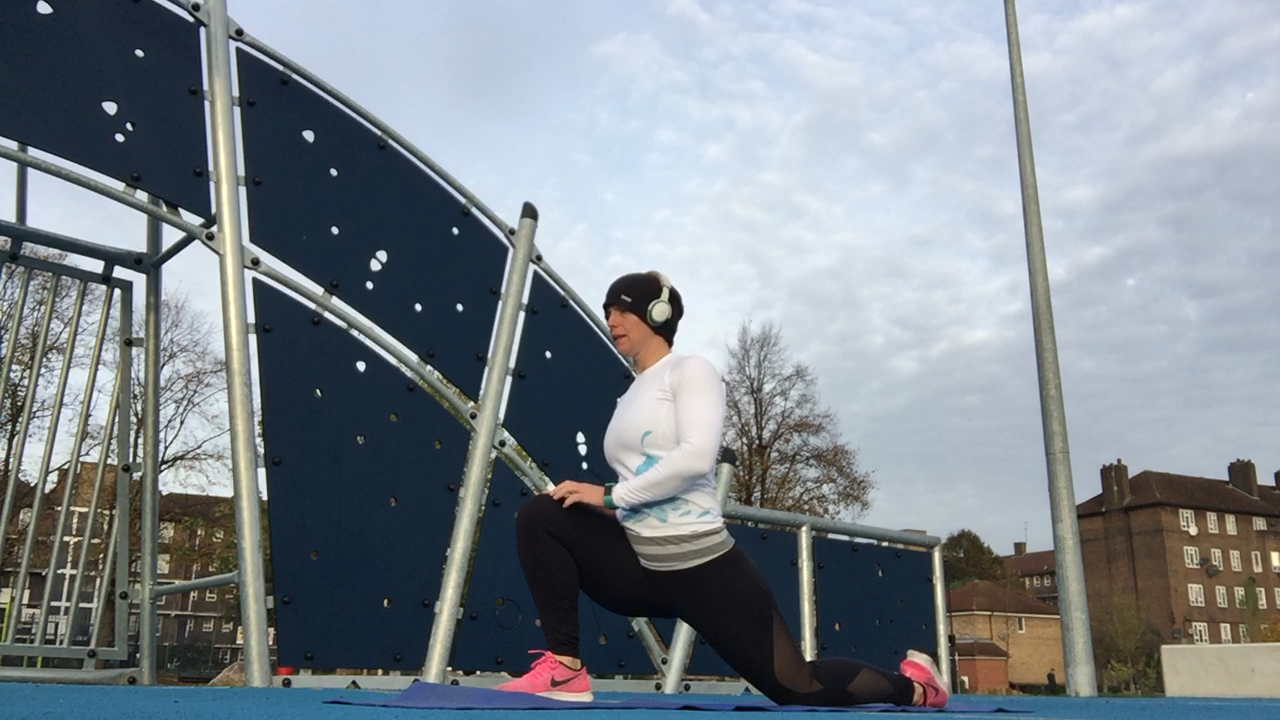My top 5 stretches for runners, post run - hold for 15 to 30 seconds.
Hip Flexor Stretch:
As we all tend to sit down for a large period of our lives, our hip flexors get very tight. Tight hip flexors result in being more quad dominant, resulting in hamstring and glute weakness when running. To ensure you can engage your glutes (largest muscle in the body) whilst running, this hip flexor stretch is a must post workout stretch!
- come into a lunge and rest your back knee and foot on the ground
- rotate your hips forwards, engage your core (belly button to spine)
- gradually increase the stretch by pushing further forwards
Quad Stretch:
- from the hip flexor stretch, come back into an upright position
- flick your foot towards the sky and reach backwards to grab your foot
- be gentle with this stretch as the quad can be very tight and the hamstrings can become overly activated, causing a cramp
- if you cannot reach your foot, do this with your foot leaning against a wall or use a band around the top of your foot
- as the stretch starts to release the muscle, move further forwards to intensify the stretch again
Hamstring Stretch:
- from the quad stretch, rest the back foot on the ground again
- slowly extend the front leg to straight (if possible) as you move your hips backwards
- keep your hips square with the front of the mat, if they start to twist, come slightly up and realign yourself
Glute Stretch:
This is one of my favourite stretches, helping to activate and elongate your glutes.
- come into a full press up position
- bring your right knee half way between your hands and rest on the ground underneath your chest
- your right foot should now be under your left hip
- slowly slide your back foot towards the back of the mat and rest
- move your hips from one side to the other if you cannot feel this stretch in your glutes, stop when you feel any tightness
Calf Stretch:
There are two variants of this stretch. The first is downward dog. You can use this as a warmup stretch for your hamstrings and calves by bending your knees alternately and trying to move your foot further and further towards the ground.
- come into a press up position
- press your hands into the mat and send your hips into the air adding more pressure through your hands until your legs are as straight as you can make them
- try to press your hands further into the mat and sink your heels downwards
The second stretch is dolphin. If you do not feel the stretch in downward dog, rest on your elbows and see if you feel this stretch through your calves.







